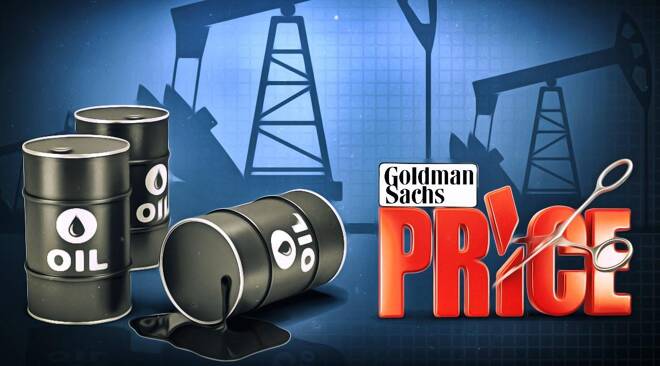Advertisement
Advertisement
Goldman & ANZ Negative On Oil Prices
By:
Crude oil is trading at 46.36 declining 60 cents in the morning session. Brent oil declined 10 cent to 48.44 with the spread narrowing to just about $2.00
A Reuter’s poll on Monday forecast that U.S. crude inventories as a whole fell by 2.1 million barrels last week. Traders also focused on the soon-to-expire front-month contract in the West Texas Intermediate, which serves as the U.S. benchmark. WTI’s October contract CLV5 will go off the NYMEX board after Tuesday’s settlement and November CLX5 will move up as the front-month.
Money managers’ net-long position in West Texas Intermediate rose by 14,821 contracts to 147,678 futures and options in the week ended September 15, according to data from the Commodity Futures Trading Commission.
In contrast, traders curbed their bullish positions in European benchmark Brent by the most in a month. The Organization of Petroleum Exporting Countries assumes crude prices will rise to $80 by 2020 as output falls elsewhere. US production could sink by the most in 27 years in 2016 as the price rout extends a slump in drilling.
“The market’s not as oversupplied as we think it is,” said David Purcell, MD at investment bank Tudor Pickering Holt & Co in Houston. “The news out of OPEC is more bullish, US production is falling and demand is great right now.”
OPEC expects crude prices to rise by about $5 a year through 2020. Production from nations outside the group will be 58.2m barrels a day in 2017, 1m lower than previously forecast. US output could sink by 400,000 barrels a day next year after a prolonged period of low prices forced producers to idle half the rigs seeking oil.
Technical market indicators pointed towards further price increases, with Reuter’s analyst Wang Tao seeing Brent rise to $49.70 per barrel based on Fibonacci retracement indicators while WTI could edge up to $47.78 a barrel. In another indicator that prices may have bottomed out, hedge funds continued to pare short positions in U.S. crude oil last week in a sign that they are no longer believe in big further price falls. Yet many analysts stay oil prices still have space to fall, with several banks including Goldman Sachs and ANZ revising their price forecasts downward this month, arguing that it will take until at least 2016 or 2017 to remove a huge overhang that has been built up over the last years by soaring production just as demand slows.
About the Author
Barry Normanauthor
Did you find this article useful?
Latest news and analysis
Advertisement
